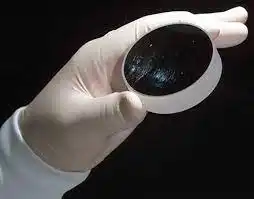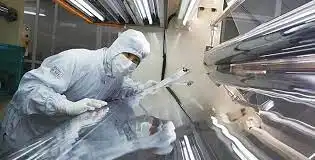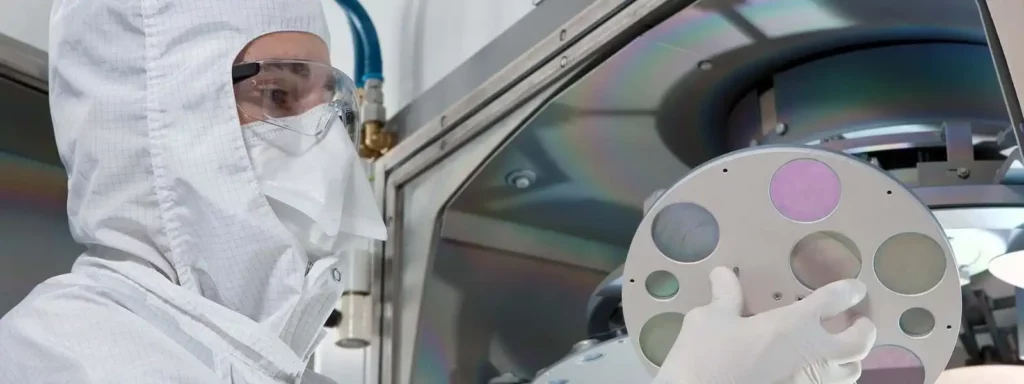Introduction
In the age of technology, where visual displays dominate our lives, optical films stand at the forefront of innovation. These films, seemingly simple, underpin a broad range of technologies, ranging from the ubiquitous screens on our smartphones, tablets, and televisions to the advanced lenses in telescopes and microscopes. Given the crucial role they play, ensuring their longevity and optimal performance becomes a matter of paramount importance. This guide aims to illuminate the best practices in caring for, cleaning, and preserving optical films, ensuring they function at their peak potential throughout their usage.

The Indispensable Nature of Maintenance, Cleaning, and Storage
One might wonder, why the emphasis on such specific care for optical films? The answer lies in their design and purpose. Optical films are not just any other film; they are precisely engineered materials tailored to manipulate light in specific ways. Even a slight aberration, be it a smudge, scratch, or a speck of dust, can disrupt their functionality, leading to compromised image quality or data loss.
Maintenance:

Routine maintenance is not just a chore but a necessity. It extends beyond merely cleaning the surface. It involves periodic checks for signs of wear, degradation, or any physical damage. Maintenance also encompasses ensuring the environment in which these films operate remains conducive to their longevity. For instance, ensuring that a projector’s optical film is free from excessive heat can prevent warping or bubbling.
Cleaning:
Given that optical films interact directly with light, their cleanliness directly equates to their performance. Imagine trying to view a picturesque sunset through a smudged window; the experience wouldn’t be the same. Similarly, an optical film laden with dust, oil, or other contaminants can significantly hamper its transparency and ability to manipulate light accurately.

However, cleaning them isn’t as straightforward as wiping them with a cloth. Using the right cleaning agents, soft non-abrasive materials, and ensuring a dust-free environment during the cleaning process can make all the difference.
Storage:
When not in use, how these films are stored can dramatically impact their lifespan. Exposure to humidity, temperature extremes, or corrosive environments can degrade optical films faster than one might anticipate. Proper storage involves placing them in a dry, temperature-controlled environment, ideally away from direct sunlight or heat sources. If possible, using protective casings or covers can shield them from accidental scratches or contaminants.
In a world increasingly driven by visual technology, the health of optical films is directly proportional to the quality of visual experiences they deliver. By investing time in their proper maintenance, cleaning, and storage, not only do we ensure their optimal performance, but we also extend their utility, making the most of the technology they support.
Maintenance and Cleaning: Preserving Pristine Quality
The longevity and optimal performance of optical films hinge on diligent maintenance and cleaning practices. Here, we delve into these essential aspects to ensure these films remain in impeccable condition.
Routine Inspections for Early Detection
Routine inspections are akin to regular health check-ups for your optical films. Conducting periodic examinations allows you to detect and address issues before they escalate. Several signs of wear, tear, or damage can manifest during these inspections, including:
Scratches: Even minor scratches can scatter light, potentially affecting the quality of images or optical performance.
Discoloration: Changes in color may indicate material degradation or chemical reactions occurring on the film’s surface.
Imperfections: Any irregularities, such as spots, bubbles, or blemishes, on the film’s surface can disrupt its optical function and clarity.

Early detection is paramount. When you identify such issues in their initial stages, you can take timely action to prevent further deterioration. Incorporating regular inspections into your maintenance routine is especially crucial for optical films exposed to harsh environments or those subjected to frequent use.
Effective Cleaning Techniques
Cleaning optical films is a delicate process that demands precision and the use of appropriate tools and methods. To maintain their pristine quality, consider these effective cleaning techniques:
Soft Cloth Method: Initiate the cleaning process with a soft, lint-free cloth that has been lightly dampened with distilled water. Gently wipe the film’s surface in a circular motion. Ensure that you do not exert excessive pressure during this process, as it can lead to the formation of scratches.
Air Blow: For removing loose dust particles, consider using a controlled air blow. This method effectively eliminates surface dust. However, exercise caution not to use high-pressure air, as it can potentially damage the film.
Diluted Soap Solution: In cases where you encounter tougher stains or contaminants, a diluted mild soap solution can be a valuable tool. After applying the solution, rinse the film thoroughly with distilled water and then carefully dry it using a soft cloth. This ensures that no residue builds up on the film’s surface.
Precautions During Cleaning
While cleaning is crucial, it’s equally important to exercise caution to avoid inadvertently harming the optical film:
Avoid Abrasives: Never use abrasive materials or cleaning solutions, as they can create irreversible scratches and compromise the film’s optical properties.
Limit Direct Contact: Minimize direct hand contact with the film surface. The oils from your skin can leave behind residues that negatively impact optical clarity.
Steer Clear of Harsh Chemicals: Stay away from cleaning agents with strong alkaline or acidic properties. These chemicals can degrade the film’s material, leading to cloudiness or discoloration.
By following these maintenance and cleaning guidelines diligently, you can extend the life and optimize the performance of your optical films, ensuring that they continue to deliver exceptional visual experiences across various applications.
Storage: Shielding Films from Potential Harm
The final piece of the puzzle in caring for optical films is proper storage. To ensure these films maintain their quality and performance, it’s essential to store them in the right conditions and take precautions against potential harm.
Optimal Temperature and Humidity Conditions
Optical films thrive in environments with stable temperature and humidity levels. Ideal storage conditions include temperatures between 20-25°C (68-77°F) and a relative humidity range of 40-60%. These conditions help prevent moisture-induced damage, which can be detrimental to the film’s integrity.
The Role of Desiccants
To further safeguard against moisture-related issues, consider using desiccants, such as silica gel packets, in your storage areas. Desiccants are highly effective in controlling humidity levels, providing an additional layer of protection for your optical films. These small but powerful agents can help maintain the desired humidity range, ensuring that moisture doesn’t compromise the film’s performance.
Avoid Direct Sunlight
Direct exposure to sunlight, particularly ultraviolet (UV) rays, can be detrimental to optical films. Prolonged sunlight exposure can lead to discoloration and degradation of film materials. Therefore, it’s crucial to store optical films in areas where they are shielded from direct UV rays. This can be achieved through proper storage containers or by keeping them in shaded areas.

Using Protective Sleeves
Storing optical films in acid-free protective sleeves is a practical measure to safeguard them from external contaminants. These sleeves not only shield the films from dust, dirt, and oils but also prevent them from sticking together or adhering to other surfaces. When using protective sleeves, ensure they are made from high-quality, acid-free materials to prevent any chemical interactions that could harm the films.
Conclusion
maintaining optical films’ peak performance relies on three fundamental actions: diligent maintenance, careful cleaning, and appropriate storage. These films are intricate and sensitive, and their longevity is directly linked to the care they receive. By following the recommended methods and precautions, you can ensure that your optical films continue to perform optimally, delivering clarity and precision for an extended period.
FAQs
- 1.How frequently should optical films be cleaned?
This depends on the environment in which they are used. In dust-prone areas, more frequent cleaning might be necessary. However, as a general guideline, monthly inspections and cleaning should suffice. - 2.Is it safe to use commercial cleaning solutions on optical films?
Unless specified by the manufacturer, it’s best to avoid commercial cleaning solutions as they might contain chemicals that can harm the film. - 3.How do I know if my optical film is damaged beyond repair?
If after cleaning, the film shows signs of cloudiness, deep scratches, or discoloration that affects its optical performance, it might be beyond repair. - 4.Can I store optical films in a regular drawer or cupboard?
While it’s possible, ensure the drawer or cupboard is in a temperature-controlled environment, away from direct sunlight, and preferably with a desiccant present. - 5.Do optical films have a shelf-life even if unused?
Yes, even unused films can degrade over time, especially if not stored correctly. However, with proper care and storage, they can last several years without significant degradation.

Frank
Frank graduated from the University of Shanghai for Science and Technology, majoring in optics. As a technical engineer at Crylink Company, he deeply understands crystal materials and laser components.
Related Video(s) with this Article
Related Product(s) with this Article
Related Application(s) with this Article
